In the year of my birth (1954), I think the automotive world began to change. By then, the austerity forced on European countries by WWII had started to wane, and cars began to become more than just a means to get from A to B. And in the United States, cars started to move away from the dome-shaped creations of the pre-war era, and reflected both the exploding population of the Baby Boom and the chrome-driven manifestation of the exploding economy.
(Please note that what follows is by no means a comprehensive list; it’s simply a catalog of cars which caught my interest and / or fancy.)
Of course, there were a few cars which were on their last legs — stylistically speaking — and they would be replaced in the following two or three years. But in 1954, a couple of models appeared on both sides of the Atlantic which I think triggered the sea change in design. Here’s one example: Fiat. Note the old-fashioned post-war styling of the 1954 500C Topolino, and the brilliant new design of the 8v Berlinetta, made in the same year:
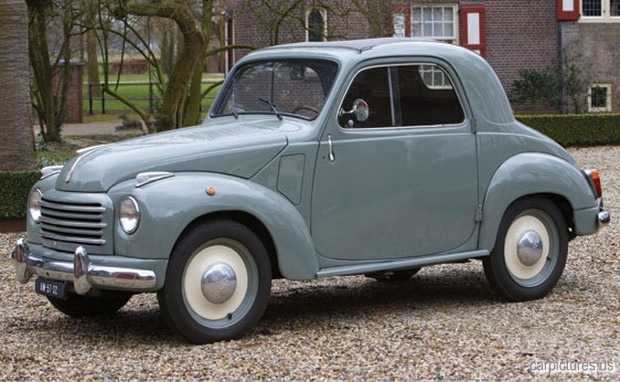
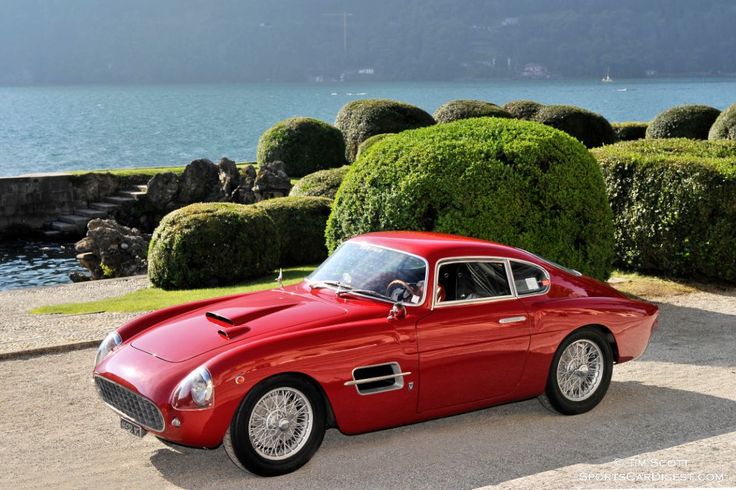
Shades of the Ferrari 375 Mille Miglia:
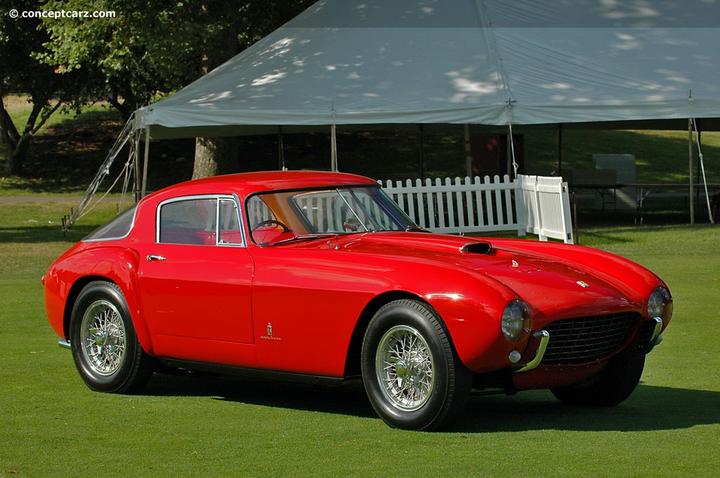
And if ever there was a study in lifestyle contrast between Europe and the U.S.A., note the 1954 Fiat 110 and the Chrysler New Yorker, both family saloon cars:
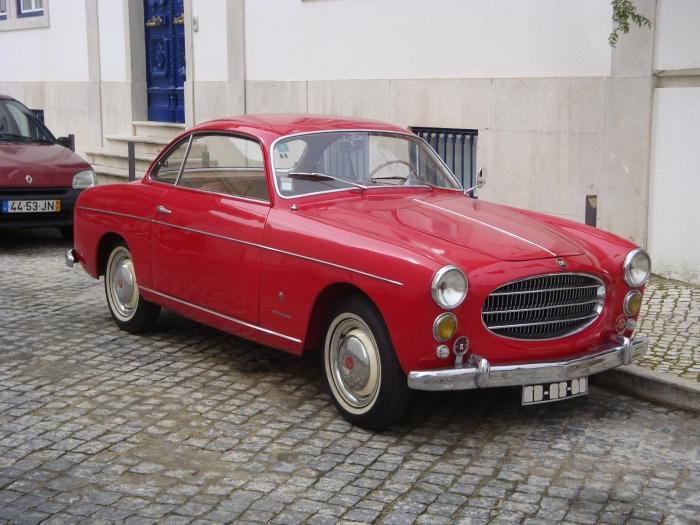
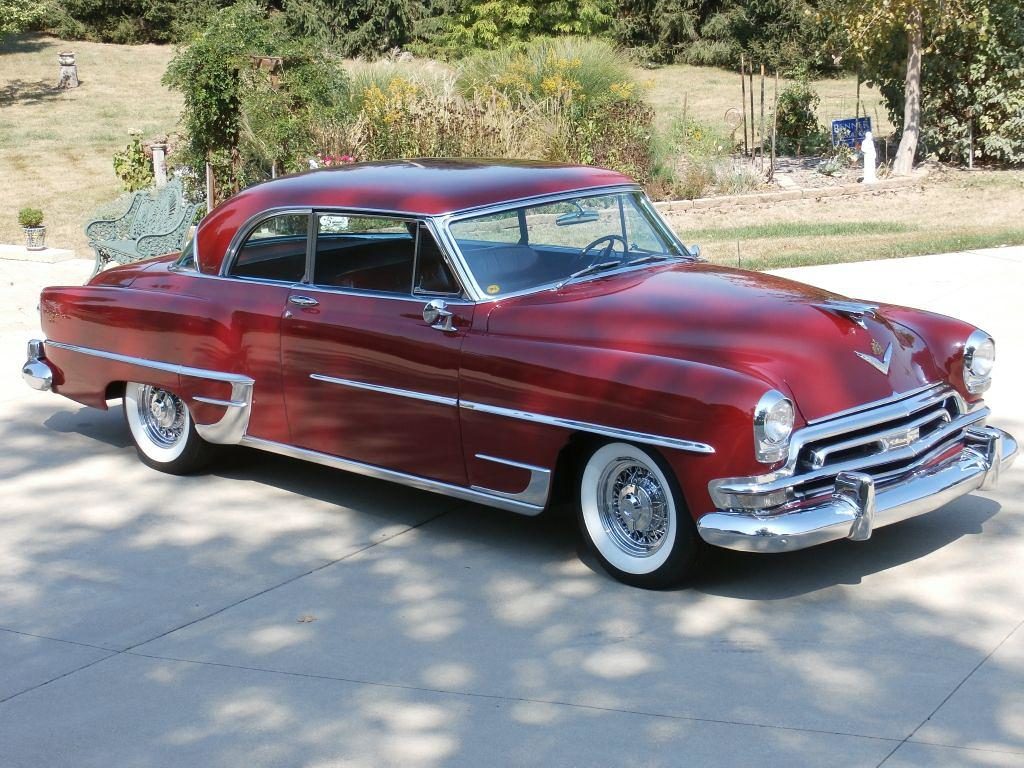
Of course, the Germans caused a distinct ruckus with the 1954 Mercedes 300 Gullwing:
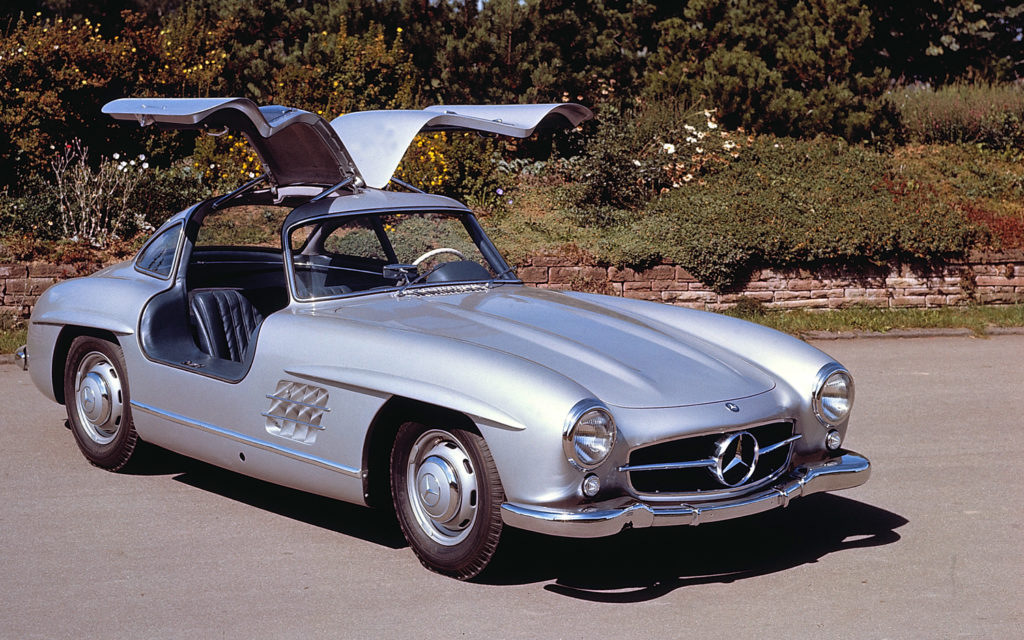
…which was a behemoth, in Euro terms, when compared to the petite Lancia Aurelia B24 Spider:
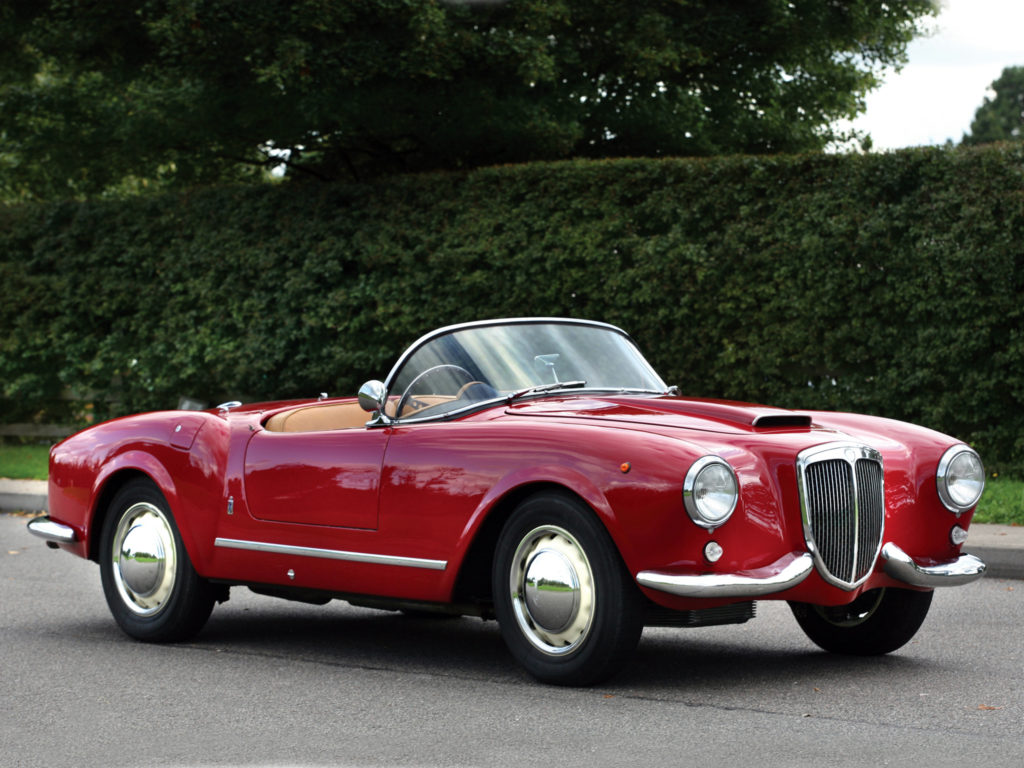
…but compared favorably to the British Daimler Conquest Drophead:
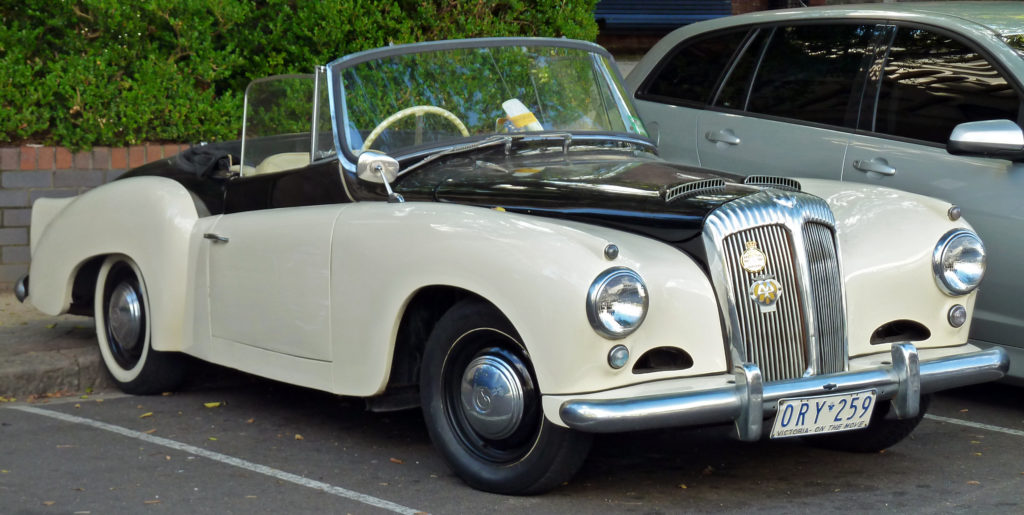
…and our old friend, the Jaguar XK120:
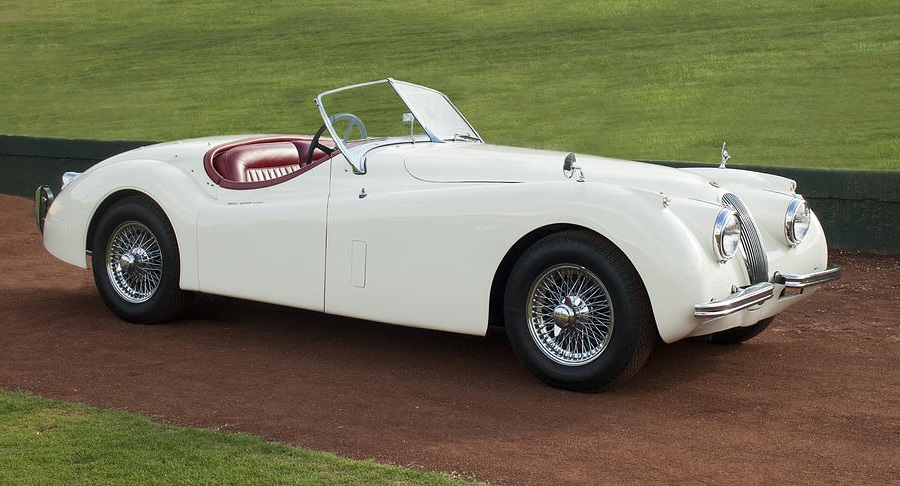
In fact, let’s spend the rest of this post looking at convertibles — why not? — so here we go, first with the 1954 Aston Martin DB2-4 Spider Bertone:
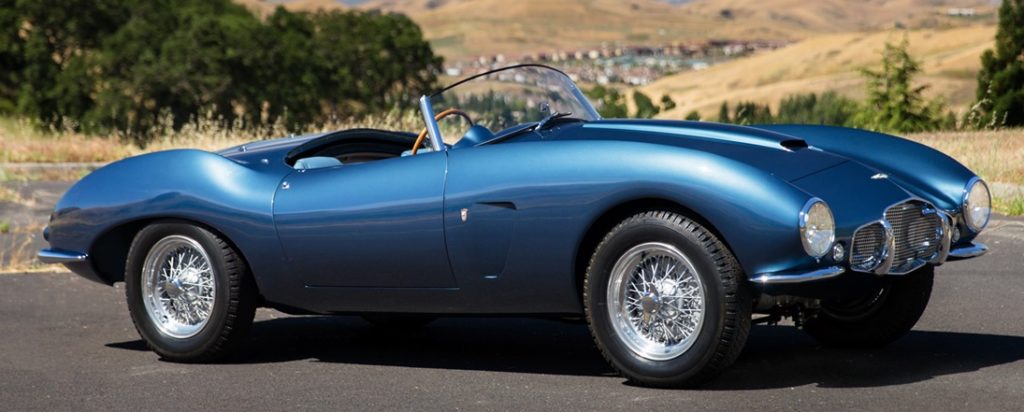
I think the iconic E-type was a direct copy of Bertone’s design, myself; but I’ll let others argue about it. The Bertone was accompanied by its stablemate, the 1954 Aston Martin DB2-4 Drophead Coupe:
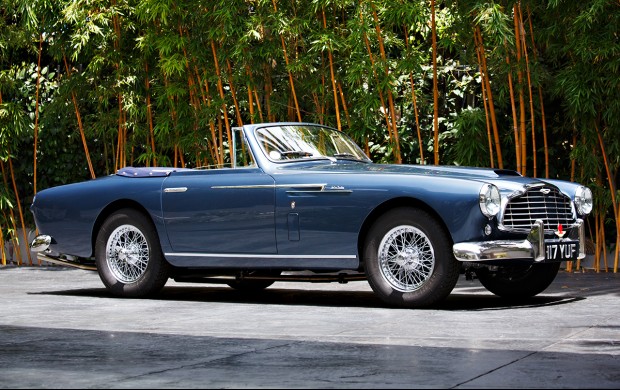
…and the equally-lovely 1954 Alfa Romeo 1900 Sport Spider:
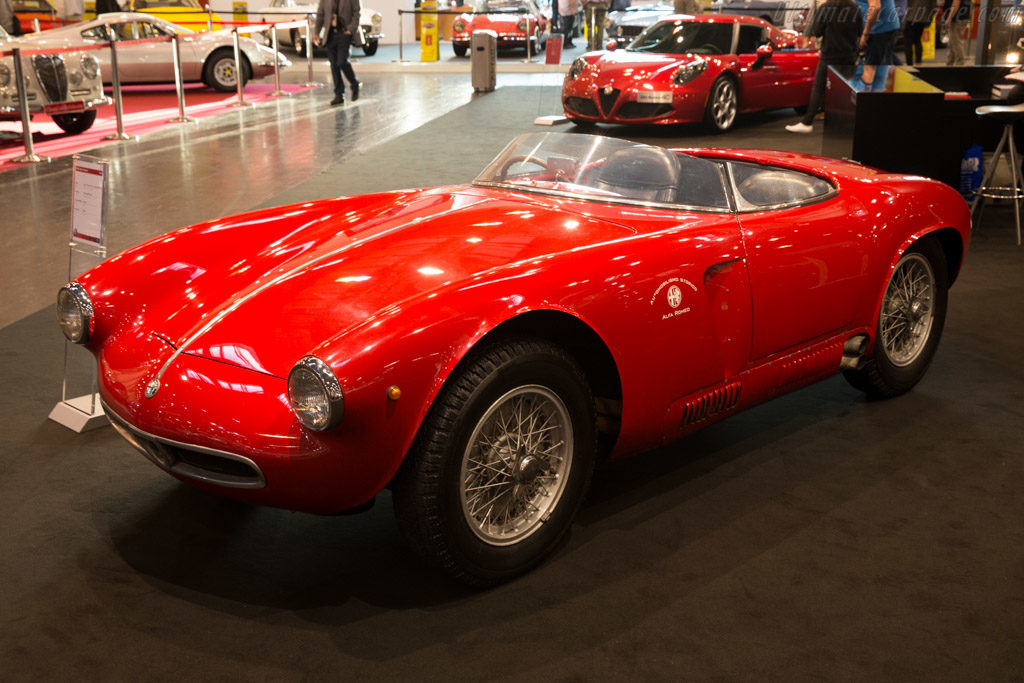
On a more modest scale, we have the 1954 Austin Healey 100-4:
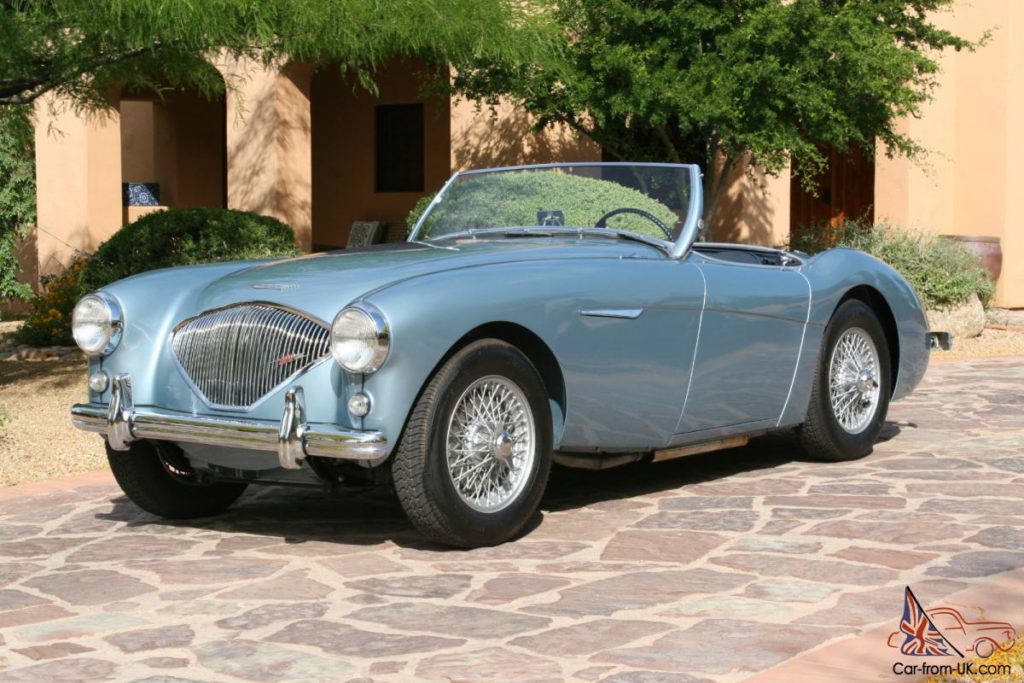
…and the French 1954 Simca “Weekend” DV:
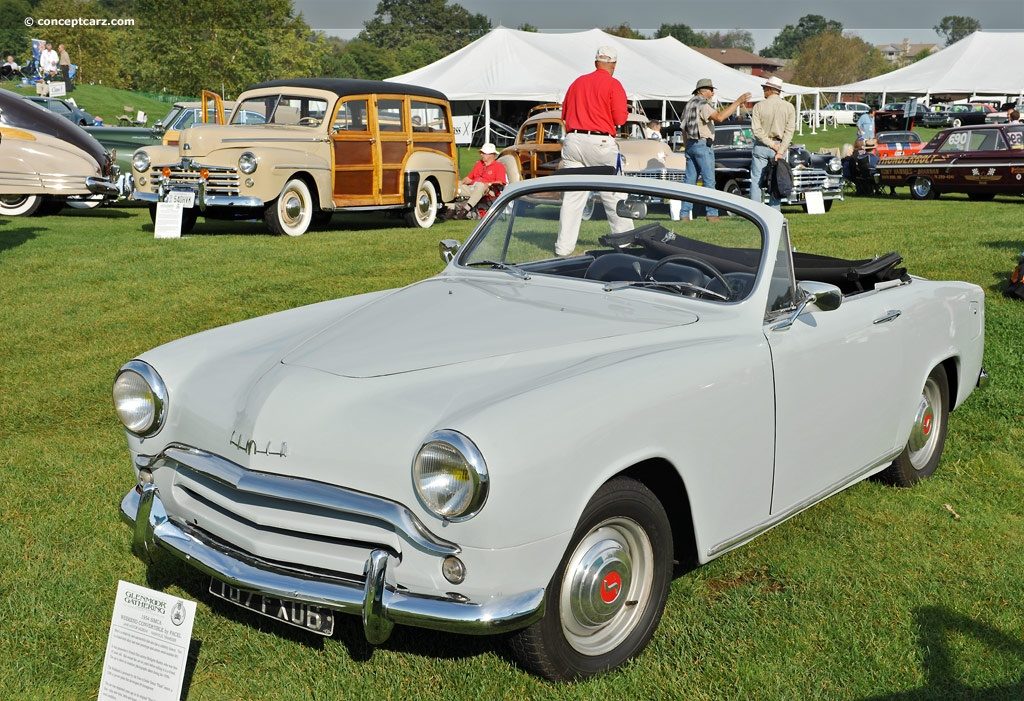
But when it came to open-top cars, the Brits and the French still sold more of the Citroën 2CV and the Morris Minor:
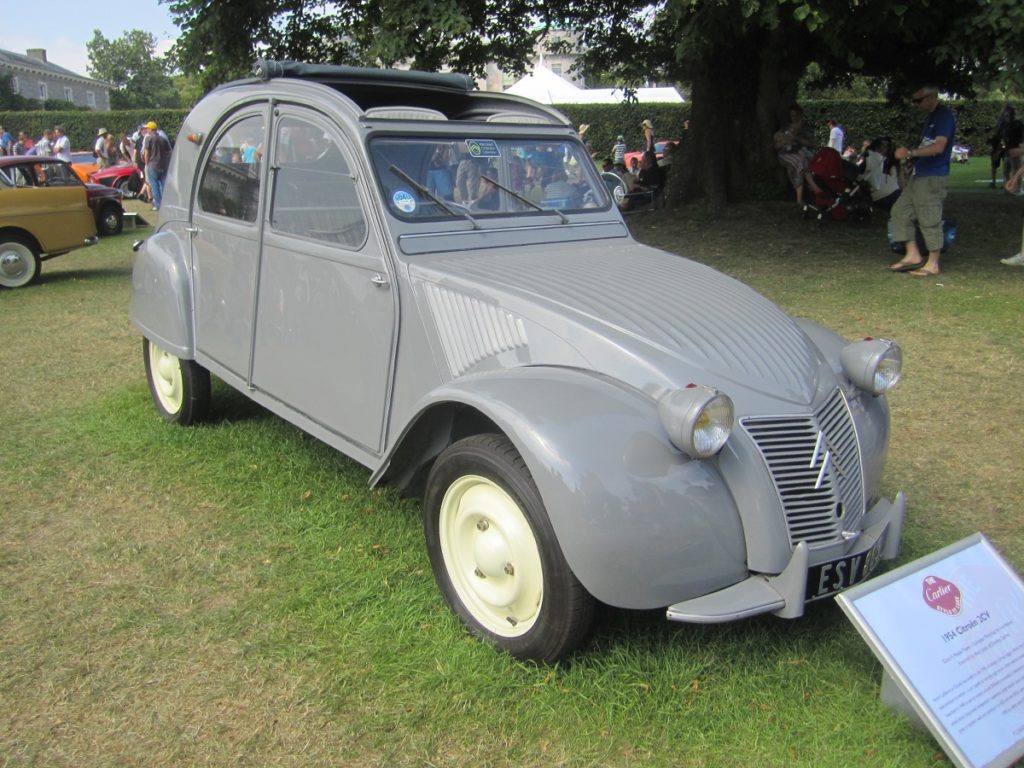
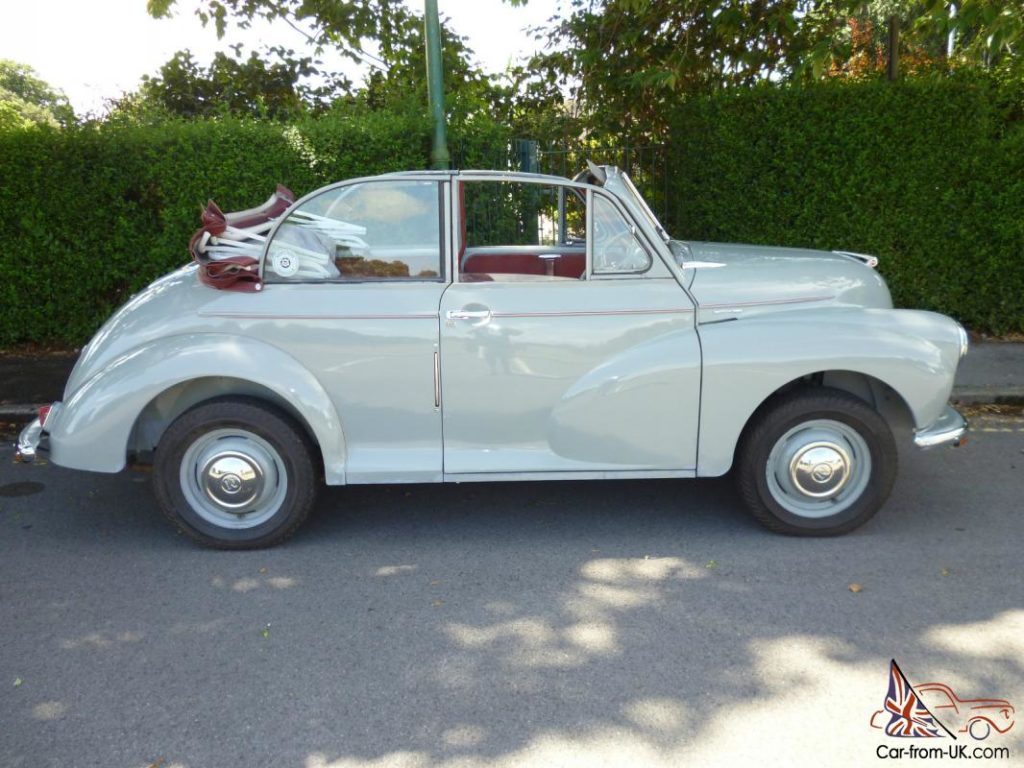
(I should point out that as a youngin, I was driven around in a Minor, my Mom’s car.)
Of course, there were the flashy numbers like the 1954 Morgan Plus 4 (which hadn’t changed since the 1930s, and has yet to change from this style to the present day):
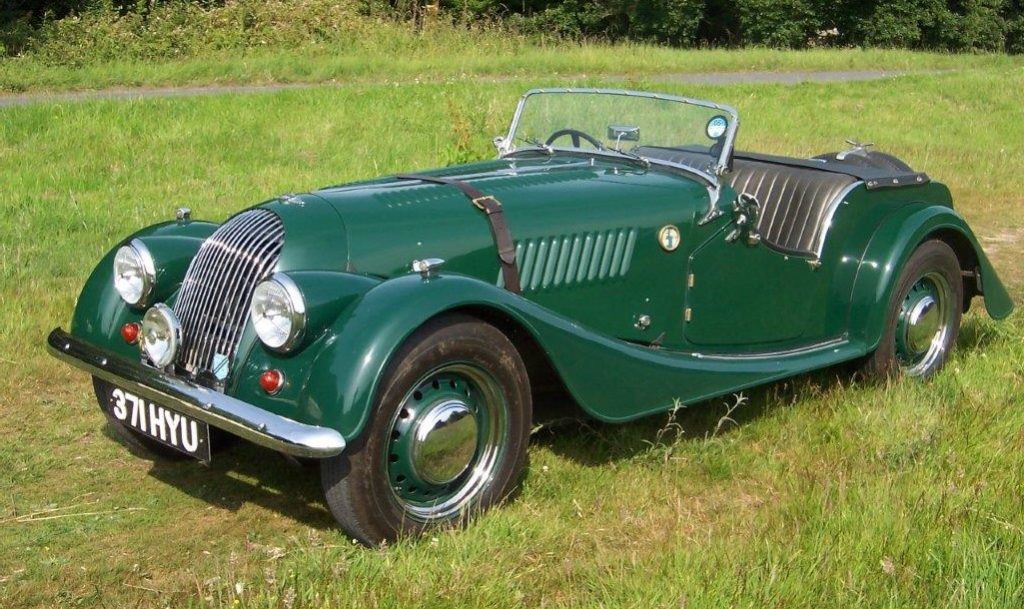
…and the rather plain BMW 502 Cabriolet:
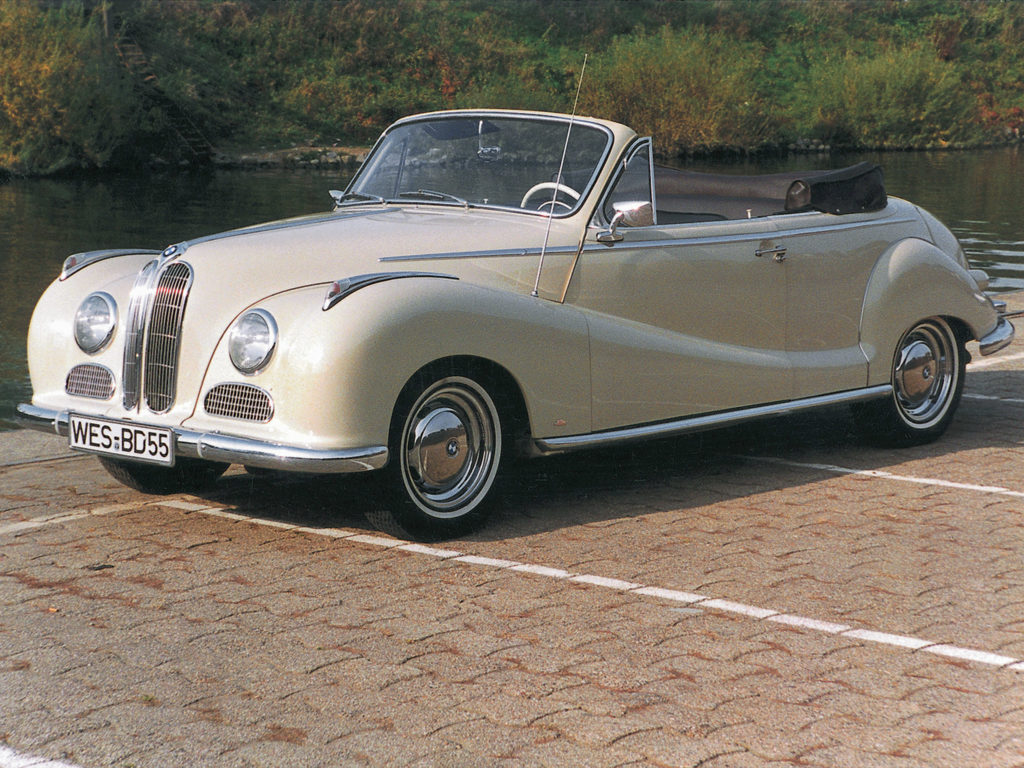
But no study of automotive styling of the 1954 model year would be complete without comparing the above to the American contingent, a sample of which appears below:
1954 Ford Crestliner:
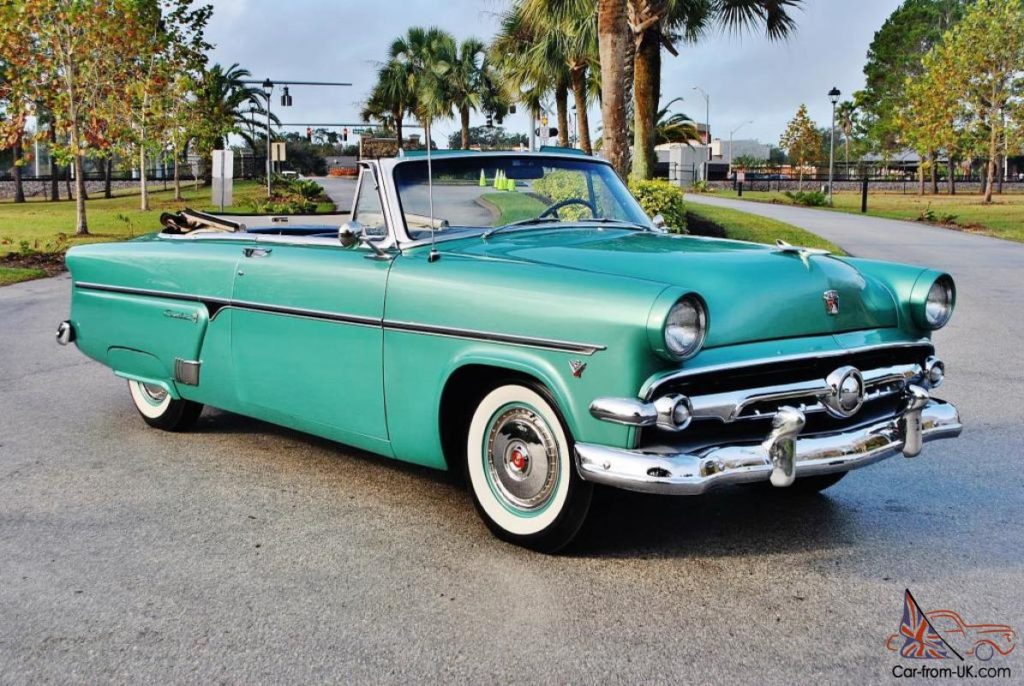
1954 Packhard Caribbean (as I recall, one of the last of the Packhards before the company was bought out):
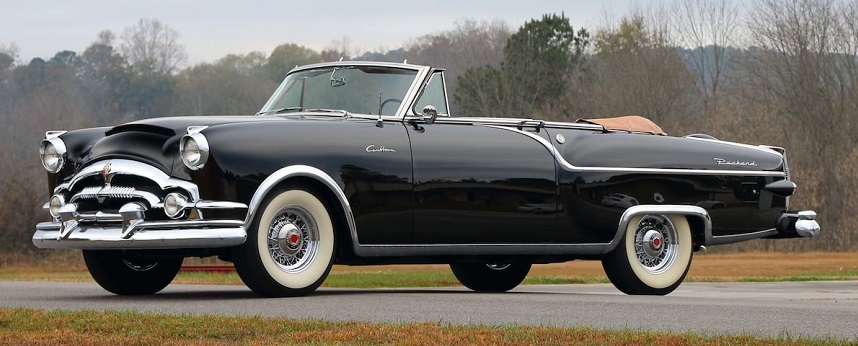
And of course, no study of this kind would be complete without the sine qua non of Murkin ’50s engineering, the Cadillac Eldorado:
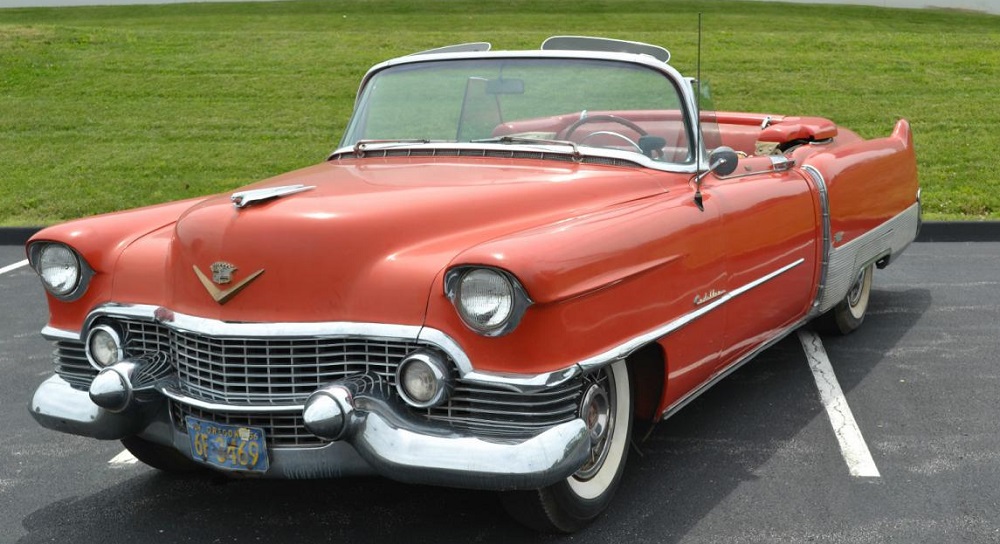
The best (largest) that the Europeans could come up with was the admittedly fine Mercedes 300S Cabriolet:
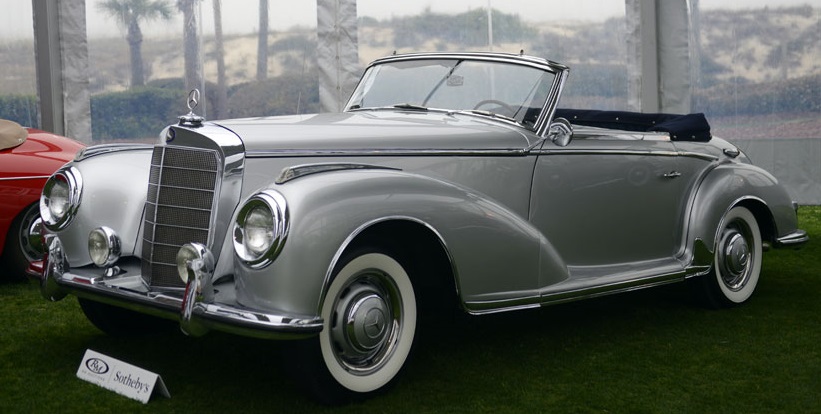
And speaking of Cadillacs and Mercedes, I’ll be looking at family saloon cars in Part 2, tomorrow.

Back when I saw a clapped out Austin Healey 3000 sitting in front of an auto parts store in Aberdeen MD with a for sale sign. I talked to the guy in the store who owned it. The car had a bunch of problems but the body was pretty straight and it ran. Unfortunately I was anticipating transfer orders and this young sailor couldn’t quickly come up with the $500 the guy was asking for the car. Remember that those things were just “old cars” back in the day. They became classics later. 45 years later I know that I should have sold my blood and mortgaged my soul for the Healey – to end up with a rusty oil burner with leaky hydraulics and a lousy electrical system. I did make up for that missed opportunity five years later by buying a 67 Sunbeam Tiger. Everybody needs to do something crazy at least once in their life. The Tiger taught me the fine art of roadside repairs and automotive improvisation (although the Ford engine was very reliable).
You forgot the 1953 Studebaker coupes penned by Robert Burke of the Raymond Loewy studio supposedly in an afternoon. His best day at work ever.
Here’s a picture of mine which is undergoing a full hot rod transformation into a modern Studillac with a 2007 Cadillac CTS-V donor. 6.0 liters and 400 bhp of V8 goodness and a Tremec T56.
That’s a great looking ride! Studebaker had some great cars – too bad they didn’t have the economy of scale to compete with the big 3.
In my earlier post about the Healey and my Tiger the idea I was trying to get across is that for all of the great looks of those European cars, you were still dealing with a vehicle that had all kinds of real or perceived reliability problems. I’ve owned a couple of lower end British sports cars and worked on many more and anybody who says anything good about Lucas electrical systems has never seen smoke coming from under the dashboard of an MG Midget or watched the headlights of a Spitfire die on a dark country road for no reason except demon possession. Let’s not forget the fun of tuning those side draft SU carbs. I still have my Uni-Syn in the bottom of my roll around toolbox as an antique collector’s item. Now that I’m retired I might get back into masochism and try to find an old Spit as a project car. Then we have the Italian cars – they look great but remember that FIAT stands for “Fix It All the Time” or “Fix It Again Tony”.
If I had to own a 50’s vintage car as my daily driver – and that means a car that will start every day regardless of the weather, will not break down and strand me someplace west of Nowhere Arizona, and will be easy to maintain and repair, well I’m going to go with the Ford or Chrysler 300. The Caddy wouldn’t be bad either – we old men like a soft ride. I’ll install a Satellite radio and cruise down the road listening to the Beach Boys.
Yup. It’s no secret that when Mazda designed the Miata, they bought three Lotus Elans, shipped them to Hiroshima, and reverse-engineered them. Then redesigned them properly. The result was a British sports car with the reliability of a brick.
One thing I note is how coyote-ugly the American cars are.
Funny. What I notice is that the more economy minded European cars (specifically the C2V and the Minor, and to a lesser extent the Topolino) look like something the cat pooped out. Not as bad as the current ‘stubbed toe’ miniature wheeled pods, but still, yech.
’50s Americana is not my preferred car style, but compared to those monstrosities, they look good to me but the nicer European cars, the roadsters especially, are beautiful. I think it was a class thing; no egalitarian car designs. Beautiful curvaceous well scaled and lined cars for the nobility and wealthy, and wheeled cat turds for the peasantry. Europe.
If the calendar said 1954 and I had to drive from Cherbourg to Istanbul I’d much rather make the run in the Ford or Chrysler or Caddy than anything that was built in Europe. Lots better chance of making it without any repairs.
I’d probably go with a Mercedes Benz, should it be 1954, and money not an object.
MB did make it’s post war business on taxicabs after all, not just luxury cars.
The 375 Mille, along with the 250 California and the 250 Testa Rossa, remain on the very short list of cars I would actually sell body parts to own.
They are all some degree of terrible to drive, and I’ve been fortunate enough to do so with two of the three– but Jeebus, just LOOK at them.
Ooooh the 250 California… [droooool]
The 300SL is still one of my favorite designs of all time. Once wound up driving behind one while leaving the Sebring 12 many years ago. Stunning.
One of my German cousins drove a 2CV for years and years, the bloody thing was indestructible. Cheaper than a VW beetle and really, better engineering.
The Frogs called it a Deux chevaux, a “2 horses” i.e 2 horsepower, with much sarcasm, even though the name means something like that under a complicated engine tax by power classification scheme. And some silly people think the Germans are bureaucrats, they got nothing on the Frogs.
The Krauts called it ‘die Ente’, ‘the duck’, which seems OK to me.
I’ve heard that the Brits call them “legless frogs”.
In my 60+ years I had never heard of a Morris Minor. But this morning as the paranormal followers say, I experienced a bit of Synchronicity. I walked into my local mega-mall to see none other than a Morris Minor 1000 being used by one of the shops. The perfumer Jo Malone had it filled with packages etc, advertising the store ! Cute little bugger.
That Lancia Aurelia B24 Spider looks very much like an Alfa Giulietta Spider that has had it’s face pushed in.
Had a ’62 Alfa G Spider that was a fun little car. Oil pressure mimicked the tach in it’s sweep. Dad got it with a seized motor. Filled the crankcase with kerosene, put it in gear, and towed it around the block. Came unstuck!
Those old American cars with the sort of “bubble-top” styling were military influenced. Look a bit like a tank or armored car or pillbox. Basically a box sitting on a body/chassis. Mid-fifties was the end of it, pretty much.